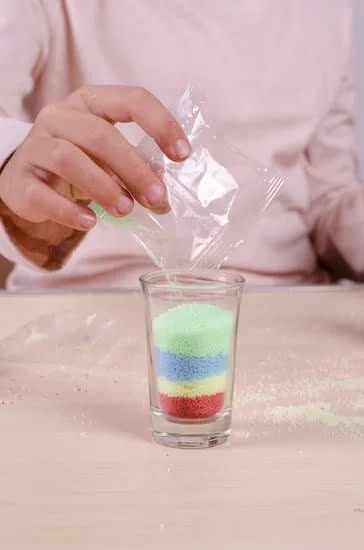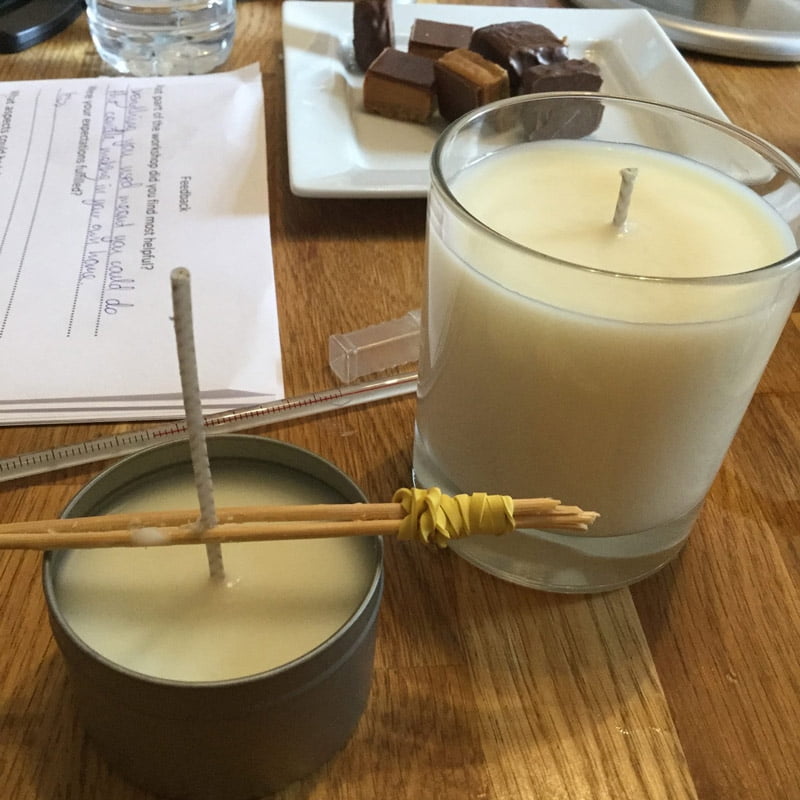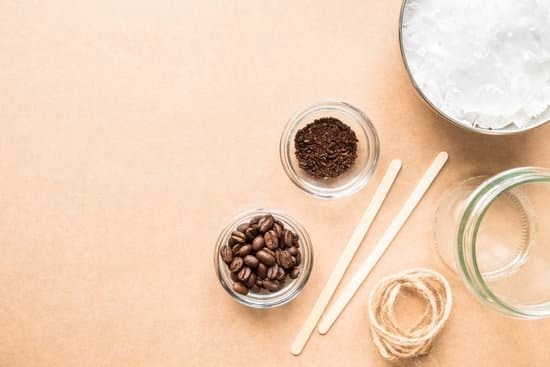Candle making has become a popular hobby for many, allowing individuals to express their creativity and create custom scents. But what exactly does maximum scent load mean in candle making? It refers to the maximum amount of fragrance oil that can be used in the candle making process to achieve the desired scent. Understanding this concept is crucial if you want to create exceptional candle fragrances.
The amount of fragrance oil used in a candle has a significant impact on the final scent. Too little fragrance oil may result in a subtle or weak aroma, while too much can lead to an overpowering or unpleasant smell. That’s where the maximum scent load comes into play – it acts as a guideline for determining the ideal balance of fragrance, ensuring that your candles have just the right amount of scent.
Determining the appropriate maximum scent load involves considering various factors like the type and size of the candle, as well as personal preference in terms of desired scent intensity. By knowing how much fragrance oil to use, candle makers can achieve consistent and appealing results with their creations.
In this article, we will delve deeper into what constitutes scent load in candle making and its role in achieving desired fragrances. We will explore different types of fragrance oils and their recommended scent loads, discussing how they affect the final outcome. Additionally, we will provide tips for accurately calculating and using the maximum scent load and highlight common mistakes to avoid when working with fragrance oils.
By mastering the concept of maximum scent load, you’ll unlock endless possibilities for creating captivating and alluring scented candles. So let’s dive into this fascinating world and discover how to maximize your creativity with fragrance oils in candle making.
Understanding Scent Load in Candle Making
In candle making, the scent load refers to the amount of fragrance oil used in the candle-making process. It plays a crucial role in determining the final scent of the candle and achieving desired fragrances. The scent load not only affects the intensity of the fragrance but also influences other characteristics such as burn time and scent throw.
The amount of fragrance oil used in a candle can significantly impact its overall scent. If too little fragrance oil is used, the candle may lack a noticeable scent when burning. On the other hand, if too much fragrance oil is added, it can overpower the room with an intense fragrance that may be unpleasant or even irritating to some individuals. Therefore, it is important for candle makers to understand and determine the appropriate maximum scent load for their candles.
When determining the appropriate maximum scent load for a candle, several factors should be considered. These factors include the type of wax being used, as different waxes have varying abilities to hold and release scents. Additionally, factors such as the size and type of container or mold, as well as ventilation in the room where the candle will be burned, should also be taken into account.
To help guide candle makers in selecting suitable scent loads for their candles, certain fragrance oils come with recommended guidelines on their strength level and recommended maximum scent loads. For example, some fragrance oils are classified as “light” or “medium” strength and have corresponding recommended maximums in terms of percentage or weight. Having this information allows candle makers to choose fragrance oils based on their desired intensity and ensure they stay within safe limits.
In summary, understanding and properly utilizing the concept of scent load is essential for creating exceptional fragrances in candles. By determining and applying appropriate maximum scent loads based on factors such as wax type and container size, candle makers can achieve optimal results in terms of both scent intensity and overall performance. Experimentation with different scent loads can further enhance the candle-making process and allow for customization of fragrances based on individual preferences.
Exploring Different Fragrance Oils and Their Scent Strength
When it comes to candle making, the choice of fragrance oil plays a crucial role in determining the scent strength and overall fragrance quality. Different fragrance oils offer varying levels of scent strength, allowing candle makers to create candles with different intensities of fragrance. Understanding the characteristics of different fragrance oils and their recommended scent loads can help candle makers achieve their desired results.
Varying Levels of Fragrance Strength
Not all fragrance oils are created equal when it comes to scent strength. Some oils have a stronger scent concentration, while others have a more subtle fragrance. It is important for candle makers to understand these differences in order to choose the right oil for their desired scent intensity.
Commonly used fragrance oils can be categorized into three main types based on their scent strength: light, medium, and strong. Light fragrances provide a gentle and subtle aroma, perfect for those who prefer a milder fragrance experience. Medium fragrances offer a balanced level of scent that is noticeable but not overpowering. On the other hand, strong fragrances provide a robust and powerful aroma that can fill an entire room.
Popular Fragrance Oils and Recommended Scent Loads
There are numerous fragrance oils available in the market, each offering its own unique scent profile and recommended maximum scent load. Some popular fragrance oils include lavender, vanilla, citrus scents, and floral scents like rose or jasmine. These oils typically have different recommended maximum scent loads based on their strength.
For example, lavender might have a recommended maximum scent load of 10% by weight for soy wax candles, while vanilla could have a maximum load of 8%. It is important for candle makers to refer to the specific guidelines provided by the supplier or manufacturer of the fragrance oil they are working with in order to ensure optimal results.
Choosing the Right Fragrance Oil for Desired Scent Intensity
The choice of fragrance oil should ultimately be based on the desired scent intensity and personal preference. Candle makers can experiment with different fragrance oils by testing them at different scent loads to find the one that best suits their needs.
If a lighter, more subtle scent is desired, it is recommended to choose fragrance oils with a lower recommended maximum scent load. On the other hand, if a stronger and more noticeable aroma is preferred, fragrance oils with a higher recommended maximum scent load can be used.
It is important to keep in mind that exceeding the maximum recommended scent load may result in decreased performance or undesirable effects in the candle, so it’s essential to stay within the guidelines.
By exploring and understanding different fragrance oils and their scent strengths, candle makers can create candles that perfectly match their vision and desired fragrance intensity. Selecting the right fragrance oil is an important step towards achieving exceptional candle fragrances that delight any space they’re burned in.
How Maximum Scent Load Affects Candle Performance
In the world of candle making, understanding the concept of maximum scent load is crucial for achieving exceptional fragrance results. The scent load refers to the amount of fragrance oil that can be safely added to a specific quantity of wax in order to achieve the desired scent intensity. It plays a pivotal role in determining the final outcome of your candles, including their burn time, scent throw, and overall performance.
Exceeding the maximum scent load can have serious consequences on your candles’ performance. One potential issue is decreased burn time. When too much fragrance oil is added, it can hinder the wick’s ability to properly burn and may result in a shortened burn time for your candle. Additionally, an overload of fragrance can cause poor scent throw, meaning that the lovely aroma you were hoping for won’t fill the room as strongly as intended.
On the other hand, if you don’t add enough fragrance oil, you may be left with a weak or barely noticeable scent. Achieving balance between the maximum scent load and candle performance is key to creating high-quality candles that deliver on both aesthetics and fragrance.
To ensure optimal results, it’s important to carefully calculate and measure the maximum scent load for your specific candle type. There are two common methods for measuring scent load: weight percentage and volume percentage. The weight percentage method involves calculating the amount of fragrance oil based on the weight of your wax, while the volume percentage method uses volume measurements instead. Whichever method you choose, accurately measuring and incorporating fragrance oils into your candle making process is essential.
By understanding how maximum scent load affects candle performance and taking the necessary steps to calculate and use it correctly, you can create beautifully scented candles that delight your senses. Avoiding common mistakes in working with scent load will also contribute to better overall quality and performance.
Remember that experimentation is key – don’t be afraid to adjust your scent load based on preferences or test different options during your candle making journey. By mastering the concept of scent load, you can unlock endless possibilities in creating exceptional candle fragrances.
Tips for Calculating and Using the Maximum Scent Load
Calculating the maximum scent load is crucial in candle making to ensure optimal fragrance performance. By carefully considering factors such as candle type, wax type, and desired scent intensity, candle makers can determine the appropriate amount of fragrance oil to use. Here are some practical tips for calculating and using the maximum scent load effectively:
- Step-by-step guide for calculating maximum scent load: To calculate the maximum scent load, start by determining the weight or volume of your wax. Then, refer to the recommended scent load guidelines provided by your fragrance oil supplier.
Typically, fragrance oils have a recommended usage rate range that considers both safety and scent performance. Multiply the weight or volume of your wax by the percentage specified by your fragrance oil supplier to determine the maximum amount of fragrance oil you should use. - Understanding weight percentage and volume percentage methods: When it comes to measuring scent load, there are two common methods: weight percentage and volume percentage. The weight percentage method involves measuring fragrances in relation to the total weight of wax used.
On the other hand, the volume percentage method measures fragrances based on their liquid volume relative to liquid wax volume. It’s important to note that different manufacturers may provide recommendations using either method, so always follow their guidelines. - Properly measuring and incorporating fragrance oils: Accurate measurements are essential when working with fragrance oils to ensure consistent results. Use precise scales or measuring tools specifically designed for candle making to measure out your fragrance oils accurately. Remember that adding too much or too little fragrance oil can greatly impact both burn time and scent throw, so be meticulous in your measurements.
By following these tips for calculating and using the maximum scent load, candle makers can optimize their fragrance performance while maintaining overall candle quality. It’s important to note that experimenting with different scent loads can also help in achieving desired results. Through trial and error, you can adjust the scent load to enhance or tone down fragrance intensity, offering endless possibilities for creating unique and exceptional candle fragrances.
Common Mistakes to Avoid When Working with Scent Load
Overestimating the Scent Load
One common mistake that candle makers can make when working with scent load is overestimating the amount of fragrance oil needed. This can result in overpowering and unpleasant scents in the final product.
It is important to carefully follow guidelines and recommendations provided by fragrance oil suppliers and candle making experts to ensure that the appropriate amount of fragrance oil is used for each specific candle type. Exceeding the recommended scent load can not only affect the overall quality of the candle, but it can also lead to issues such as poor burn performance and limited scent throw.
Inaccurate Measurement of Fragrance Oil
Accurately measuring fragrance oil is crucial when working with scent load in candle making. Using a reliable digital scale or measuring tool is recommended to achieve precise measurements. Common mistakes include using inconsistent units of measurement (such as weight instead of volume) or eyeballing measurements, both of which can lead to inaccurate scent load calculations. To avoid these errors, it is advisable to always use proper measuring techniques and ensure that all tools used are properly calibrated.
Neglecting Safety Precautions
When working with fragrance oils, it is important to prioritize safety throughout the entire candle making process. Some common mistakes related to safety when handling scent load include not wearing protective gloves or masks, not properly ventilating the workspace, and not storing fragrance oils securely. These oversights can have health implications for candle makers and may also compromise the quality of their products. It is crucial to read safety guidelines provided by fragrance oil suppliers and adhere to them strictly.
By avoiding these common mistakes, candle makers can effectively work with scent load in their creations, ensuring accurate fragrance intensity and optimal performance in their candles.
Experimentation
Experimentation plays a crucial role in candle making, particularly when it comes to achieving the desired fragrance. Adjusting the scent load allows for customization and personalization of candles, creating a unique sensory experience. Here are some tips and techniques for experimenting with scent load to achieve the desired results:
- Start with the recommended scent load: Every fragrance oil has a recommended maximum scent load, which is the percentage of fragrance oil you can safely add to your candle wax without compromising its performance. It’s important to start with this recommended amount and carefully follow the guidelines provided by the manufacturer.
- Test different scent loads: To find the perfect balance of fragrance in your candles, it’s essential to test different scent loads. Begin by making small batches using varying amounts of fragrance oil within the recommended range.
For example, if the recommended maximum scent load is 10%, you might test candles at 6%, 8%, and 10%. This will allow you to compare and evaluate how each batch performs in terms of both scent throw and burn time. - Consider desired fragrance intensity: The desired fragrance intensity may vary depending on personal preference or the intended use of the candle. For a subtle scent, you may opt for a lower scent load, while for a stronger aroma, you may increase the amount of fragrance oil used. It’s helpful to keep notes during testing to remember which scent loads produced the desired results.
- Document your experiments: As you experiment with different scent loads, be sure to document your findings. Take note of factors such as burn time, hot throw (scent while burning), cold throw (scent when unlit), and overall satisfaction with each batch tested. This documentation will help you identify patterns and make informed decisions when adjusting your scent load in future candle making projects.
By being open to experimentation and adjusting the scent load accordingly, you can create candles that perfectly suit your taste and style. Each candle making journey is unique, and with practice, you’ll gain a better understanding of how different scent loads impact the final product. Remember to have fun and embrace the process of discovering the perfect scent load that will elevate your candle creations.
In Conclusion
In conclusion, understanding and maximizing the scent load in candle making is crucial for achieving exceptional candle fragrances. By grasping the concept of scent load and its role in the candle making process, crafters can create candles that deliver the desired scent intensity and longevity.
It is important to remember that the amount of fragrance oil used directly impacts the final scent of the candle. By carefully considering factors such as wax type, container size, and personal preference, crafters can determine the appropriate scent load for their candles. This involves finding a balance between achieving a strong fragrance and ensuring optimal candle performance.
Exceeding the maximum scent load can have negative effects on burn time, scent throw, and other characteristics. Therefore, it is crucial to calculate and use the maximum scent load accurately. Following step-by-step guides for calculation methods and using practical measuring techniques will help ensure accurate results.
Avoiding common mistakes in working with scent load is also essential in creating high-quality candles. Inaccurate calculations or improper measurements can greatly impact the overall quality and performance of candles. By understanding these potential pitfalls and learning from them, crafters can effectively adjust and optimize their scent loads.
In summary, mastering the concept of maximum scent load in candle making allows crafters to achieve exceptional fragrance results. Through experimentation, careful calculation, avoiding common mistakes, and documenting results during testing, candle makers can continually improve their skills and create remarkable candles that delight customers with their captivating scents. So go forth on your candle-making journey with confidence, knowing that you have unlocked one of the secrets to exceptional candle fragrances-maximizing scent load.
Frequently Asked Questions
What is the maximum fragrance load for candles?
The maximum fragrance load for candles refers to the highest amount of fragrance oil that can be safely and effectively added to a candle wax without causing any issues during burning or compromising the quality of the fragrance. The exact maximum fragrance load can vary depending on several factors, including the type of wax being used, the specific fragrance oil, and personal preference.
While there is no universally fixed limit, it is generally recommended to remain within a range of 6-12% fragrance load for most candle waxes.
Is 10% fragrance load too much?
Whether 10% fragrance load is too much or not depends on various factors. In general, a 10% fragrance load should be safe as long as it falls within the recommended range for the specific type of wax being used. However, it is essential to consider certain aspects such as the strength of the chosen fragrance oil and how it performs in your particular candle wax.
Some strong or concentrated fragrances may require lower percentages to achieve a desirable scent throw, while others may require higher percentages if they are lighter or more subtle. It’s crucial to test different ratios and observe how the final candles perform before settling on an appropriate fragrance load.
What is the max fragrance load for soy wax?
The maximum fragrance load for soy wax can also vary depending on several factors similar to other types of wax. Soy wax generally has excellent scent retention capabilities due to its porous nature and ability to hold onto fragrances well, making it popular among candle makers. While there is no definitive maximum limit for soy wax fragrances, it is commonly suggested to use a range between 6-10%.
Soy wax tends to have better cold throw (scent when unlit) than hot throw (scent when lit), so using slightly more than the minimum range might help achieve better scent performance during burning while still maintaining overall safety and quality standards. However, experimentation and testing with different ratios are advisable for individual recipes and preferences until you find what works best for you.

Welcome to my candle making blog! In this blog, I will be sharing my tips and tricks for making candles. I will also be sharing some of my favorite recipes.





